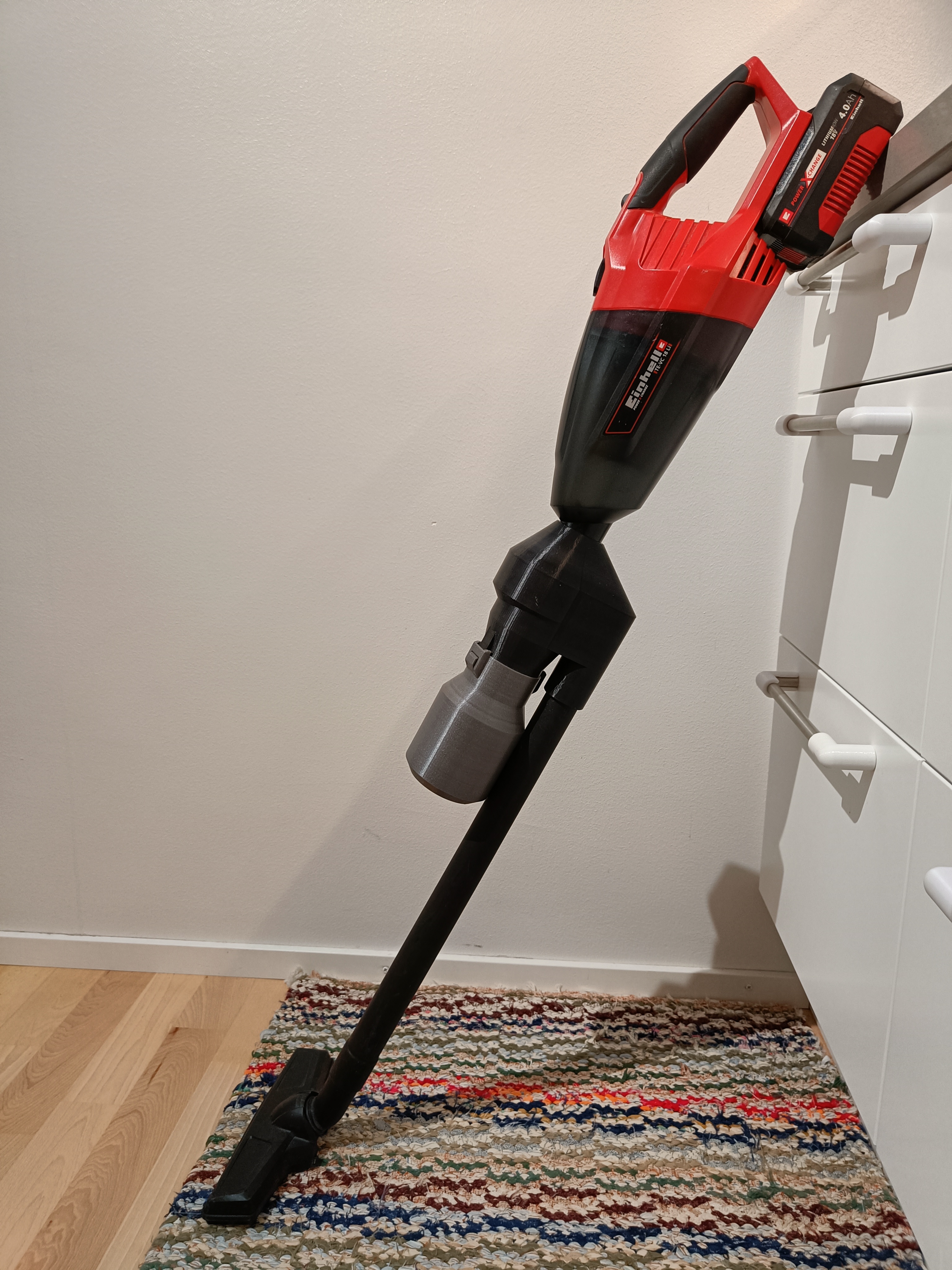
Cyclone separator for cordless vacuums
prusaprinters
<p>TL;DR:</p><ul><li>Sub 5 micrometer dust particle separation cut-off (density at or greater than water)</li><li>Minimal pressure drop with little or no practical effect on suction power</li><li>3D-printable with only one support</li><li>FreeCAD design files and OpenFOAM case files included</li></ul><figure class="media"><oembed url="https://youtu.be/vqrOAJJyxIw"></oembed></figure><p>The long version:</p><p>With children, sand and dirt gets everywhere in the house and a cordless vacuum is an irreplaceable asset in keeping the home (somewhat) clean. Many of the cheaper cordless vacuums don't include a cyclone separator to save cost which means that, during daily use, the filter has to be replaced every week or so.</p><p>That's why I spent way too much time in designing and testing this cyclone attachment for cordless vacuums. The result: a cyclone attachment with sub 5 micron dust separation cut-off (density at or greater than water) and a barely noticeable drop in suction power. Don't believe me? Believe the attached Euler-Lagrangian CFD-analysis. You can even tweak the cyclone design and run your own CFD-analysis (OpenFOAM case files attached).</p><p>The cyclone attachment has been specifically designed for the Einhell TE-VC 18 Li cordless vacuum. However, the 3D model was designed on FreeCAD and all original files are attached to make modifying/remixing the design for your needs easier.</p><p>Personally, I've been using the separator for about three months and during that time I've only changed the vacuum's dust filter once (I used to change it about once every week without the separator).</p><p>Downsides/short-comings:</p><ul><li>As with all cyclone separators, some larger debris may get caught in the separator and reduce the efficiency</li><li>Some debris is not separated well (like, for example, long hair)</li><li>The inlet of the separator had to be designed with an upward slope for printability which leads to some larger particles getting trapped in the upper part of the cyclone until the vacuum is turned off</li><li>This was the first design I've ever made on FreeCAD (and the first CFD analysis on OpenFOAM) so I pretty much just experimented my way through the design phase and didn't bother making anything parametric. So if you change something in the base sketches, something else is almost guaranteed to break</li><li>The dustibin attachment mechanism needs a redesign badly (it's a pain to use in its current iteration)</li></ul><p>The OpenFoam case files have been generated with the CfdOF-extenstion of FreeCAD and then modified to run the Euler-Lagrangian simulation.</p>
With this file you will be able to print Cyclone separator for cordless vacuums with your 3D printer. Click on the button and save the file on your computer to work, edit or customize your design. You can also find more 3D designs for printers on Cyclone separator for cordless vacuums.
